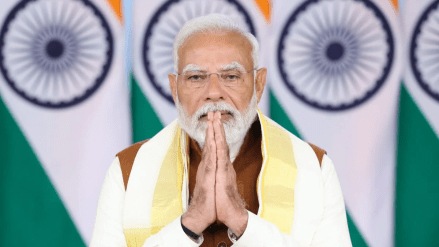The Bharatiya Janata Party (BJP) is leading in the early trends of the 2025 Delhi Assembly elections, ahead in 43 out of 70 seats. The incumbent Aam Aadmi Party (AAP), which won the last two elections with a significant majority, is currently leading in 27 seats. With 36 seats required to form the government, the race remains closely watched.
One of the key issues in this election has been middle-class concerns, particularly following Union Finance Minister Nirmala Sitharaman’s Budget 2025 announcement, which raised the income tax exemption limit to Rs 12 lakh. The move has been seen as a significant relief for taxpayers and is believed to have influenced voter sentiment.
Speaking to reporters ahead of the Budget Session on Friday, Prime Minister Narendra Modi expressed his hopes for economic prosperity, stating, “I pray that Maa Lakshmi continues to bless the poor and middle class of our country with her abundant blessings.”
Middle Class at the Center of Political Discourse
In the run-up to the elections, various political leaders placed strong emphasis on the middle-class demographic. President Droupadi Murmu, in her Budget Session speech on January 31, made multiple references to the middle class, while Prime Minister Narendra Modi spoke about the government’s commitment to the economic segment.
AAP also sought to appeal to middle-class voters, with party chief Arvind Kejriwal releasing a ‘middle-class manifesto’ on January 23, highlighting demands for tax relief and economic benefits. Over the years, AAP has built a strong voter base among lower-income groups and those benefiting from its welfare schemes. However, surveys suggest that the BJP has been able to narrow the vote-share gap among middle-income voters compared to previous elections.
Changing Political Landscape in Delhi
The election campaigns also saw a focus on taxation policies, with AAP criticizing the rising tax burden on the middle class, while BJP highlighted its economic policies aimed at boosting growth. Meanwhile, voter preferences have been shaped by multiple factors, including governance, economic policies, and development initiatives.
Delhi, which has seen a decade of AAP rule, last had a BJP-led government in 1998. If the current trends hold, it could mark a significant shift in the capital’s political landscape. With counting still underway, the final outcome will determine whether BJP secures a majority or if AAP can stage a comeback.
